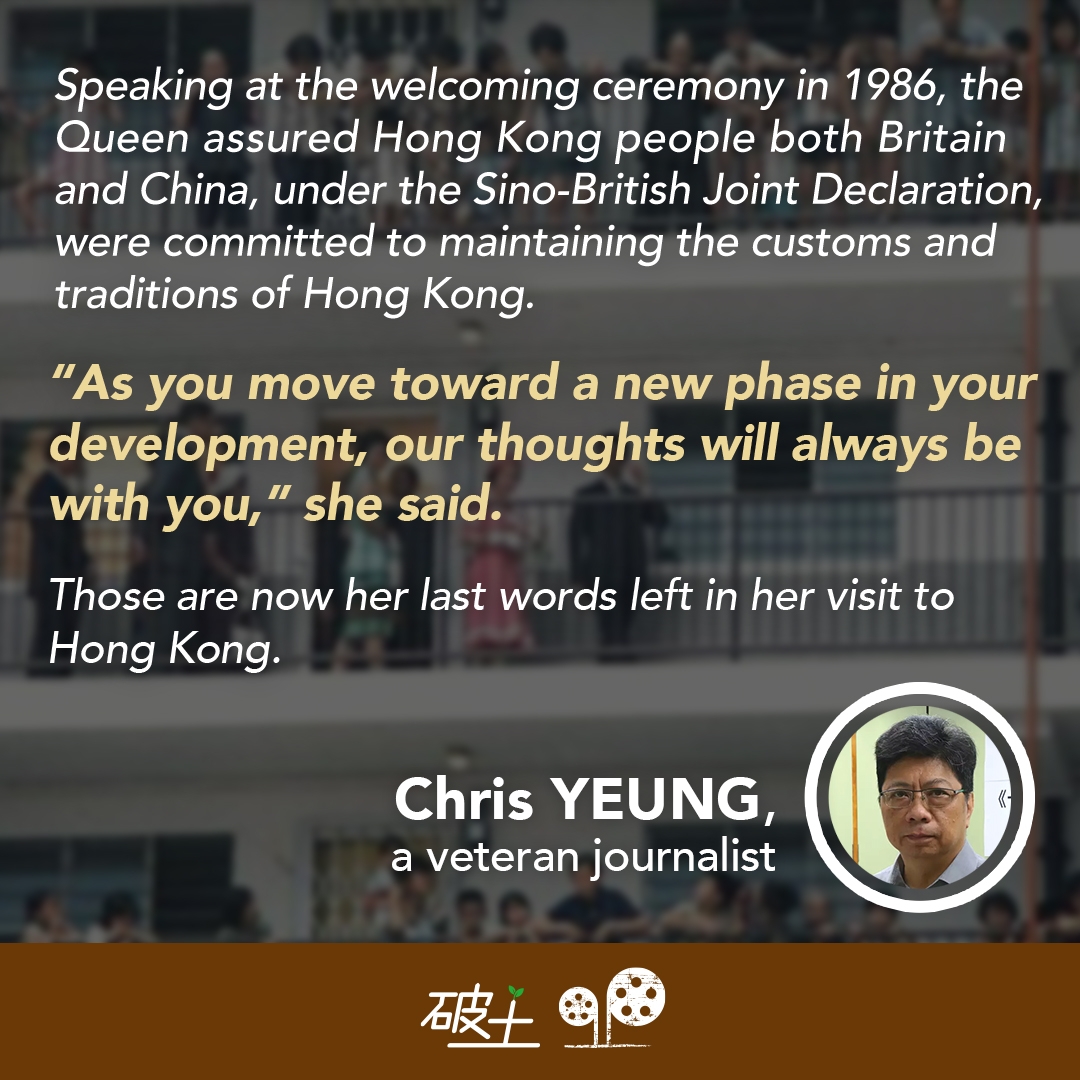What if the Queen visits HK again

Flashed back to late October 1986 when late British monarch Queen Elizabeth visited Hong Kong for the second time since she was enthroned in 1952. Quoting long-time observers of the royal family, the UPI news agency said in a report dated October 21, 1986 that this could be the last visit to Hong Kong by a British monarch before the colony reverted to China on July 1, 1997. It was proved to be correct.
The late Queen’s three-day trip became her last visit to the enclave, now a Special Administrative Region of China. She passed away on September 8. Had the Queen lived on and paid her third visit to the former colony, she would have observed Hong Kong in 2022 becoming a profoundly different place that she had visited twice.
Victoria Harbour, a symbol of Hong Kong, has survived “decolonisation” with its name being kept unchanged, at least until now. If she had flown or sailed into the city aboard the royal yacht as she did in 1986, she would have either landed at the new airport in Chek Lap Kok or a pier at the harbour, surely not the Queen’s Pier, which exists in name, but not in reality.
Flanked by more skyscrapers and a huge piece of reclaimed land now the home of the West Kowloon Cultural District, the shrinking harbour has become an unwilling victim to the city’s economic boom and fast-pace development since the 1980s.
If she had decided to visit the Hong Kong Polytechnic (now university) again, she would have found an extended campus, a newly-built main entrance, but also greater restrictions over visits by members of the public. Some changes are more subtle and controversial. Beginning from the new semester that kicked off this month, Polytechnic and other university students are required to study courses on national education and national security.
If she had asked for a chat with students at the University of Hong Kong, once the major institute that nurtured local high-fliers in the colonial administration, the Queen would be likely to be met by a couple of mainland Chinese students, among local and international students.
Hopefully, their meeting will not coincide with controversies that involve mainland and Hong Kong students, now a subject of much controversy in universities. There was one of this kind last week.
On September 9, HKU said in a statement an unspecified number of students had been expelled from a dormitory as they had allegedly “offended fellow hall residents with inappropriate language and behaviours under the influence of alcohol.”
Undergrad, a student union’s publication, reported that several HKU students had bullied and sexually harassed two female students from mainland China staying in the same university hall of residence.
The university’s punishment has apparently failed to put an end to the dispute. A pro-Beijing group reported the case to the police two days later, demanding an investigation. The Equal Opportunities Commission has stepped in.
The Queen’s visit to the Oi Man Estate in 1975 was one of the highlights of her first visit in 1975. If she had chosen to revisit the residential complex in Homantin again, she would have no doubt felt proud of the quality of the city’s public housing programme launched by the late governor Lord McLehose. The complex, completed in 1975, is still in good shape.
But the policy of providing subsidised housing to those in need is not. The average waiting time for a household for a flat now is six years, doubling the government’s promise of three years.
Thanks to the ten-year public housing programmes, the squatters that provided shelters to tens of thousands of refugees who fled from the mainland have become history. But failures of the government to build subsidised flats to meet the demand have aggravated the problem of subdivided flats, now sites of regular visits by top officials to show their care for the plight of the vulnerable groups.
The third visit of the Queen to the city, which will never happen, would have included a visit to families who live in subdivided flats.
Speaking at the welcoming ceremony in 1986, the Queen assured Hong Kong people both Britain and China, under the Sino-British Joint Declaration, were committed to maintaining the customs and traditions of Hong Kong.
“As you move toward a new phase in your development, our thoughts will always be with you,” she said.
Those are now her last words left in her visit to Hong Kong.
Scenes of today’s Victoria Harbour, university campuses, subdivided flats, among others, have encapsulated the profound changes that have unfolded since the Queen bade farewell to the city in 1986.
And ironically, it is against the background of those changes that the city saw a massive outburst of a feeling of nostalgia unleashed by the news of her death.
Braving sweltering heat, tens of thousands of people queued for long hours last week to pay their last tribute to the Queen at the British Consulate in Queensway, a few minutes walk from Central, saying goodbye and thank-you.
While expressing sorrow towards her death, they were venting out a feeling of sadness over the passing of the former colony’s good old days and frustrations and anger over the deplorable state of the SAR.
That could not have come at a more embarrassing time in the midst of the much-publicised vows by Chief Executive John Lee, with the backing of the Beijing leadership, to take the city to a new phase of development 25 years after the 1997 handover.
▌[At Large] About the Author
Chris Yeung is a veteran journalist, a founder and chief writer of the now-disbanded CitizenNews; he now runs a daily news commentary channel on Youtube. He had formerly worked with the South China Morning Post and the Hong Kong Economic Journal.